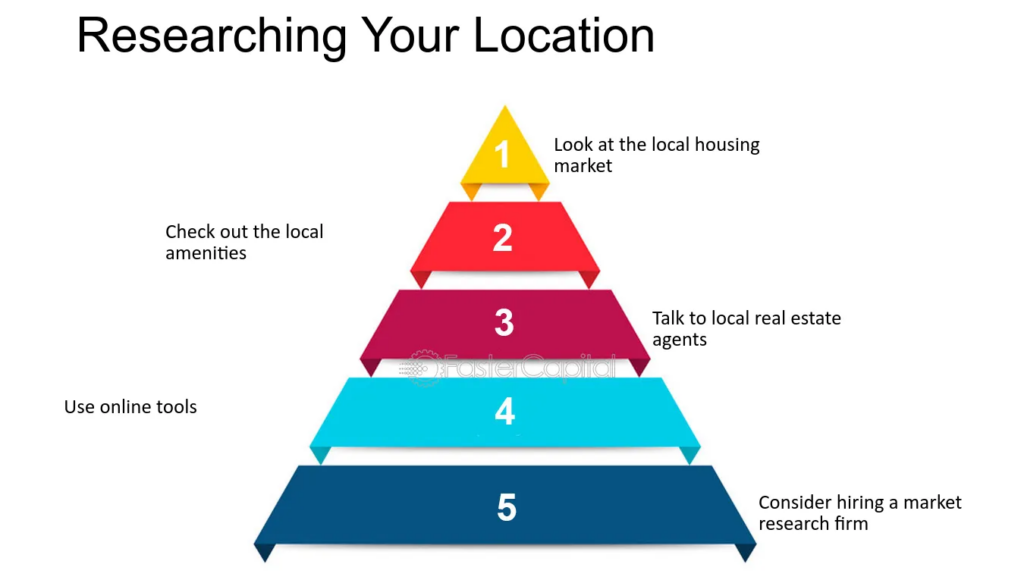
Introduction
Investing in real estate can be a great way to diversify your portfolio and generate rental income, especially when purchasing investment properties in strong real estate markets that are experiencing growth and have favorable conditions for investors. However, when investing out-of-state, it is absolutely critical to thoroughly research and understand the nuances of that local real estate market before purchasing an investment property there. Out-of-state investing comes with unique challenges that make proper due diligence and an in-depth understanding of the target market essential.
The key to successful out-of-state real estate investing is taking the time to thoroughly study key factors like the local economy, employment trends, housing supply and demand, prices and rents, property taxes, and other costs. It is not enough to rely on national real estate trends or general assumptions. Each local market is different and has unique dynamics that investors must understand if they want to make wise purchases that will generate returns over the long run. Proper due diligence takes time but is vital.
This article provides a comprehensive guide to researching a local real estate market for prospective out-of-state investors. By thoroughly studying the factors outlined here, investors can make informed decisions and avoid costly mistakes when purchasing investment properties in unfamiliar areas. The keys are understanding historical trends, current conditions, and future projections in order to determine if the market fundamentals align with your investment goals and risk tolerance. Out-of-state investing can be highly rewarding, but only if you do your homework first. Check out our full range of information: What You Need to Know About Investing in Richmond Real Estate When You Live Out of State, including Choose the Right Location, Understand the Local Laws and Regulations, Analyze the Return on Investment, and Work with a Professional Real Estate Buyer.
Understand Local Market Conditions
When investing in rental property in an unfamiliar location, it is crucial to understand the dynamics of the local real estate market. This will give you key insights into the balance of supply and demand and help determine if it is a good market for investment.
Some key factors to research about housing supply and demand include:
- Home construction trends – Is the pace of new home building keeping up with demand? Rapid construction can lead to oversupply.
- Home sales activity – Are homes selling quickly or lingering on the market? High demand and quick sales signal a tight market.
- Rental vacancy rates – A vacancy rate below 5% often indicates strong tenant demand. High vacancies suggest an oversupplied rental market.
- Population and job growth – Positive demographic trends feed housing demand. Slow population or job growth can dampen demand.
- Affordability – High prices and a lack of affordable inventory for locals can deter buyers and renters.
- Interest rates – Rising rates make financing less affordable, slowing real estate markets. Low rates spur demand.
Gaining an intimate understanding of supply and demand dynamics will indicate if the local market conditions are favorable for investment. Always dig deeper than national trends and analyze the specifics of the target rental market. An out-of-balance market could expose you to excessive risk.
Study Local Economic Factors
When investing in an out-of-state rental property, it’s crucial to research the local economic factors to determine if the area will support steady demand and healthy appreciation over time. Pay particular attention to job growth and major employers in the region.
A growing job market and the presence of stable industry leaders are positive indicators that point to an expanding local economy. Look at labor statistics and announcements about new companies moving to the area. Identify the top employers and industries that make up the economic engine of the region.
If the job growth rate is strong and major established companies are located there, it can signify a robust rental market. Employees need places to live, so a busy job market feeds the demand for rental housing. Growing companies also attract new residents to the region, further increasing the need for rentals.
Additionally, examine the overall unemployment rate, as extremely low rates may indicate an overheated housing market. Try to gauge if the economy relies too heavily on one or two industries. You want diversity and stability.
Research commercial real estate trends as well, since business activity impacts the broader economy. New construction and falling vacancies are good signs.
By thoroughly understanding the local economic conditions you can determine if the area has a healthy economic mix poised for growth. This will allow you to make wise investment decisions.
Research Local Demographics
Understanding the demographics of a real estate market you are looking to invest in is crucial. Pay attention to population changes over recent years and whether the area has been growing or declining. A growing population generally indicates a strong real estate market, while a declining population can be a red flag.
Look at age distribution as well. Areas with a younger population may have more demand for rentals, while places with an older population may have higher demand for single-family homes. Analyze household income levels to gauge what pricing you may be able to achieve on rentals or sales. Examine household size, as larger households will require bigger homes.
It’s also important to research the employment landscape and identify major local employers. A diverse mix of stable employers across various industries is ideal. You’ll want to avoid areas dominated by a single employer or industry that may be prone to economic downturns.
Digging into all these demographic factors will give you a solid sense of the real estate market’s current status and future outlook. This data will help you determine if an area is a promising investment location or one that is better to avoid.
Learn Local Tax Laws
When investing in rental properties out of state, it’s crucial to understand the local tax laws. Property taxes and other relevant taxes can significantly impact your returns.
Property Taxes
Property taxes are typically imposed at the city or county level. Tax rates can vary widely across different cities and counties, even within the same state. Make sure to research the specific property tax rate for the exact area you are considering investing in. Also find out how the property taxes are calculated. Some jurisdictions assess property taxes based on the purchase price, while others assess based on assessed value that may differ from market value. Understand any available exemptions, like for homestead or senior citizens.
Other Relevant Taxes
Beyond property taxes, also look into local income taxes, sales taxes, and excise taxes. Many cities and counties impose their own income taxes on top of state taxes. High income taxes eat into rental profits. Sales taxes apply to purchases like maintenance equipment and materials. Excise taxes may apply to rentals and utilities.
Thoroughly researching local tax laws will help avoid surprises and accurately evaluate the financials of a rental property investment out of state. Consulting with a local tax professional can provide key insights into the tax implications. Taxes are a critical part of the equation when assessing an out of state real estate investment.
Study Recent Home Price Trends
When investing in an out-of-state rental property, it’s crucial to research recent home price trends in the area. This will give you an understanding of home appreciation or depreciation over time.
Look at historical home price data going back 10-20 years if possible. Examine the median and average sales prices for homes similar to what you plan to purchase. Home prices don’t move in a straight line, there are ups and downs. But over the long-term, most markets see steady appreciation above the rate of inflation.
Pay attention to home prices since the last recession. Many markets saw huge price gains in the early 2000s, followed by declines during the housing crash. Have prices fully recovered or exceeded the previous peak levels? This will tell you how healthy demand is today.
Compare home price appreciation to national averages. Markets with stronger job growth and population inflows typically see faster appreciation. Be wary of buying in markets significantly outpacing national norms, as they could be overheating and due for a correction.
Look at listings to see if homes are selling above or below asking prices. A market where homes sell above list price indicates high demand from buyers and limited inventory. This dynamic favors investors but can make it harder to find suitable properties.
Understanding recent price trends will help you determine if the market offers good appreciation potential. Look for steady, moderate gains over time rather than markets with rollercoaster volatility. Recent history can be a good indicator of future trends.
Understand Rental Market Dynamics
When investing in an out-of-state rental property, it’s crucial to understand the local rental market dynamics to determine if it’s a sound investment. Evaluate the rental demand in the neighborhood and city by looking at:
- Occupancy rates – A high occupancy rate indicates strong demand and scarce supply of rentals. Ideally look for 95% or higher occupancy.
- Rental rates – Research average rental rates for similar properties in the area. Look at rental listing sites to find currently available units and prices. Make sure potential rental income meets your needs.
- Rental growth – Look at rental trends over the past 5 years. Areas with growing population and job growth tend to see stronger rent increases.
- Seasonality – Some rental markets may fluctuate seasonally. It’s important to understand high vs low periods of demand.
- Renter demographics – What types of renters live in the area? Understanding average income, family size, etc can help assess demand.
- Supply constraints – Low vacancy paired with limited new construction can push rents up. Look into recent and planned development.
Analyzing these key factors will give you insight into the strength of the local rental market. A strong rental market will help ensure you can generate sufficient rental income from the property.
Evaluate Financing Options
When investing in an out-of-state rental property, it’s crucial to understand your financing options. There are a few main types of loans to consider:
Mortgages
Most investors will need a mortgage loan to purchase a rental property. Be sure to shop around with different lenders and compare terms. Important factors are the interest rate, length of the loan, and fees associated with the loan. You’ll also want to ask if the lender charges higher interest rates or fees for out-of-state rental properties. Mortgages for investment properties typically require a higher down payment and interest rate than primary residences.
Investment Property Loans
There are specific loan programs for financing investment real estate that may offer better terms than conventional mortgages. These are often called “non-owner occupied loans” since the borrower won’t live in the property. The lending criteria is focused more on the potential rental income rather than the borrower’s income. Many lenders offer investment property loans including banks, credit unions, and private lenders.
Cash-Out Refinance
If you already own your primary residence or other properties, you may be able to do a cash-out refinance to tap into your home equity. This converts a portion of your equity into cash that can be used for a down payment on the new rental property. Cash-out refinancing involves taking out a new mortgage for more than what you currently owe and using the difference to invest in the rental property.
Hard Money Loans
Hard money loans are provided by private investors rather than banks. They are asset-based loans, meaning they are provided based on the property itself rather than the borrower’s credit and income. These loans charge higher interest rates but can be obtained much quicker than traditional financing. Hard money loans require a thorough inspection of the property and can fund the purchase and rehabilitation of a rental property.
Peer-to-Peer Lending
There are online peer-to-peer lending platforms that connect real estate investors with private lenders. This provides more financing options beyond traditional banks. Peer-to-peer loans are pooled from individual investors and issued to the real estate investor. Each lending platform has its own requirements, rates, and terms.
When financing an out-of-state rental, it pays to understand all your options. Seek quotes from multiple lenders and compare interest rates, fees, loan terms, and borrowing limits. This will help you find the most favorable financing for your investment property.
Research Property Management
When investing in rental properties out of state, having a good property management company is crucial. Since you likely won’t be nearby to handle maintenance issues, tenant complaints, or showings yourself, you’ll need to rely on a property manager.
When researching property management companies, look for ones that specialize in the area and property type you’re investing in. For example, a company that mainly handles large apartment buildings likely won’t be the best fit if you’re investing in single family rentals.
Make sure to understand the full costs involved. Many property managers charge a percentage of monthly rents collected, often 8-10%. There can also be additional fees for tasks like placing ads and showing the unit, preparation of leases, coordinating maintenance, etc. It’s important to get fee estimates in writing ahead of time so you can accurately project expenses.
Also look at reviews for property managers to gauge their responsiveness, professionalism, and how they handle emergencies or difficult tenant situations. You want someone who will treat your property with the same care as you would.
Having a top-notch property manager is essential for profitable, headache-free real estate investing out of state. Take your time to research and choose the right one before purchasing an investment property.
Conclusion
Thoroughly researching a market is crucial before making an out-of-state real estate investment. By taking the time to understand local market conditions, economic factors, demographics, tax laws, price trends, rental dynamics, financing, and property management, you can make informed investment decisions.
Here are some final tips when researching out-of-state real estate investing:
- Hire a knowledgeable local real estate agent who can provide expertise on the area and help you identify promising properties and neighborhoods.
- Talk to local property managers to get insights on rental demand, rates, and regulations. They can also advise you on managing the property from afar.
- Connect with local contractors, inspectors, and other professionals who can support you in evaluating properties and managing renovations if needed.
- Spend time exploring the area to get a first-hand feel for the neighborhood and community. Walk around, check out local amenities, and get a sense of the vibe.
- Consider traveling to the area during different seasons to understand how the weather and tourism fluctuate throughout the year.
- Be conservative in your assumptions and projections to account for unexpected costs and challenges in an unfamiliar location.
By immersing yourself in the local market, you can gain the knowledge needed to make a smart investment in an out-of-state property. Just be sure to do your homework before taking the plunge. We are know locally as the “We Buy Houses in Richmond, VA” company.
Give Us a Call Today at (804) 420-8515


